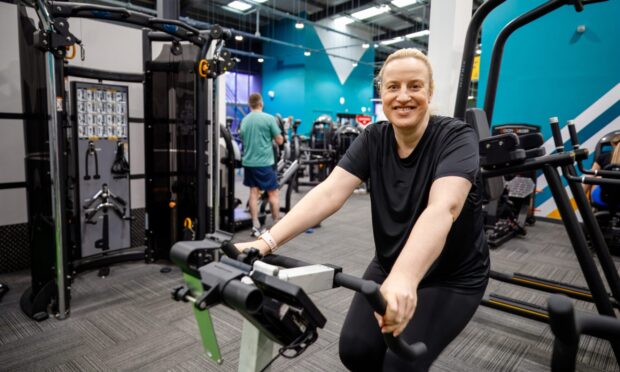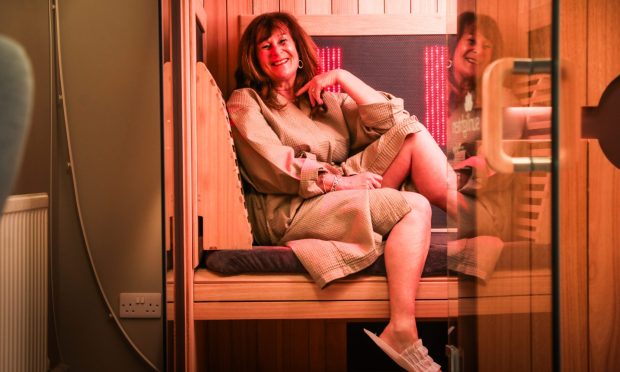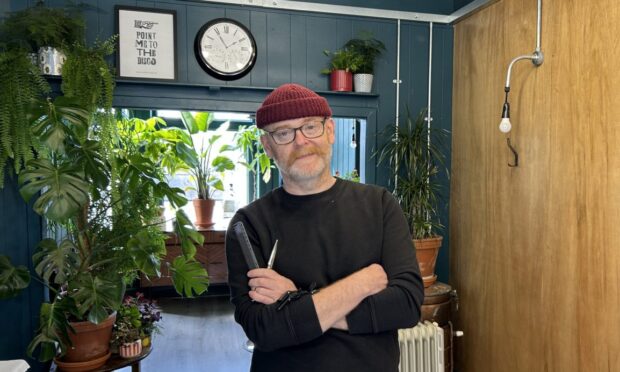I used to love everything about the festive season; the twinkly lights, the schmaltzy Christmas songs, you name it.
But in recent years festive cheer has become a complete pain. Literally.
You see for people like me, the only thing Santa brings is a month-long bout of debilitating migraines that send me to a darkened room.

The noise, lights and rushing around have now become triggers.
I’ve been a migraine sufferer since my mid-40s. Christmas is a perennial problem – but the pandemic made things worse.
The Migraine Trust reports 67% with the condition say their migraine worsened during the pandemic, and almost half say their headaches were more frequent.
Not ‘just’ a headache
A migraine isn’t ‘just’ a headache. “One in seven people suffer. It is one of the most common, and most debilitating conditions in the world,” says Dr Katy Munro, headache specialist at the Migraine Centre and author of Managing Your Migraine.
“It is a genetic, neurological brain disorder affecting people in a variety of ways.
“The brain of a person with migraine cannot properly process sensory inputs from stimulation such as light, sound, smells or touch, even when an attack isn’t happening.”
Migraine shut down my normal life
My migraines started with a vengeance in my 40s. The condition has totally shut down my ability to lead a normal life.
I was forced to leave a senior office job, and was at first diagnosed with stress, then chronic fatigue syndrome.
I gave up coffee and sugar. On the advice of a nutritionist, I even went vegan. It made no difference.
I tried CBT. All it did was make me feel like a freak.
Botox injections greatly helped me.
There was even a stint with a cognitive behavioural therapist, who tried to change my reaction to noise and help me to relax. All it did was make me feel like a freak.
I am now taking amytriptyline, an antidepressant said to calm the central nervous system. The pills dull the pain a bit, but they have side-effects.
How Botox helped me
I was greatly helped by Botox injections – these are thought to block the chemicals responsible for pain from being released to the brain, which helps relax the muscles and lessen the pain.
Then, the pandemic put paid to my regular three-monthly appointments.
One day in May 2020, I had three Zoom meetings back to back. I was explaining something when I got a terrible, stabbing pain on the right side of my head.
It was so bad, I had to make my excuses and crawl into bed, where I laid motionless.
This was a whole new level of agony for me – like shards of glass piercing my brain. It was so severe I staggered against the wardrobe door. I thought I was going to collapse.
Dr Chris Blatchley, headache specialist at the London Migraine Clinic, says: “While Botox doesn’t make migraines disappear, it is often a lifeline for people to be able to function on a daily level.
“I’ve had patients bursting into tears because they can’t get their treatments. People are very emotional when they are in pain.”
How I’m managing my migraines now
I manage my condition. I rest twice a day, I ‘de-noised’ my flat – putting my mobile phone on silent, as ringing or even a pinging new message will trigger sharp pain in my head.
And I only watch TV now and again as the flickering screen can be too much.
I may not be able to sing along with the family karaoke this New Year but I’ve learnt tricks to cope with my festive migraines.
I need my essential migraine rescue kit – ice pack, painkillers, sugary treats – and of course understanding from my family, but it’s worth it for a peaceful New Year.
For information and support with migraines, visit The Migraine Trust.












